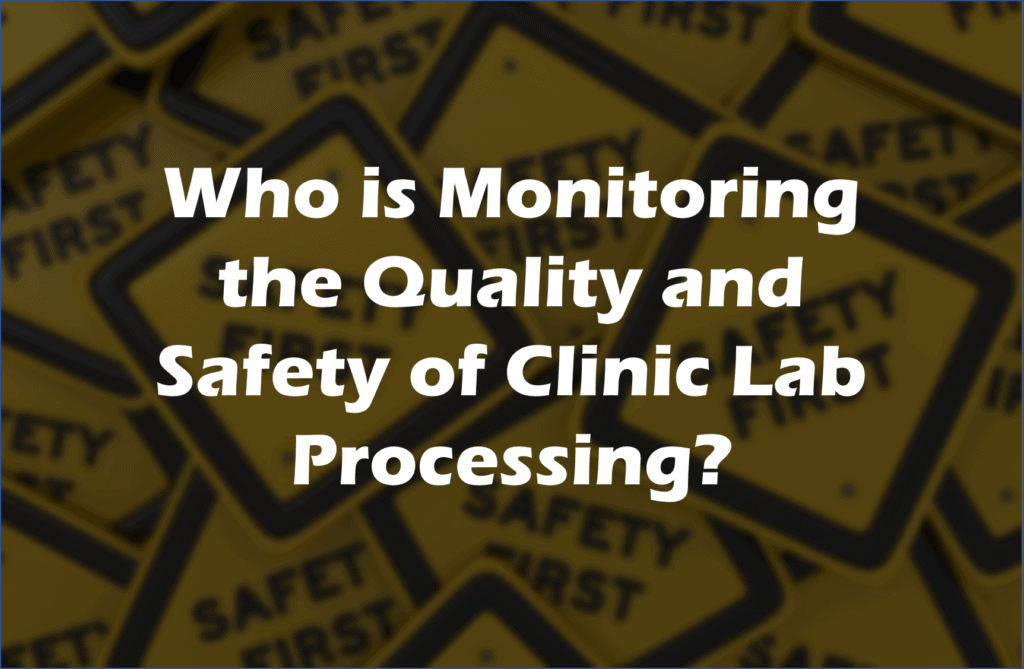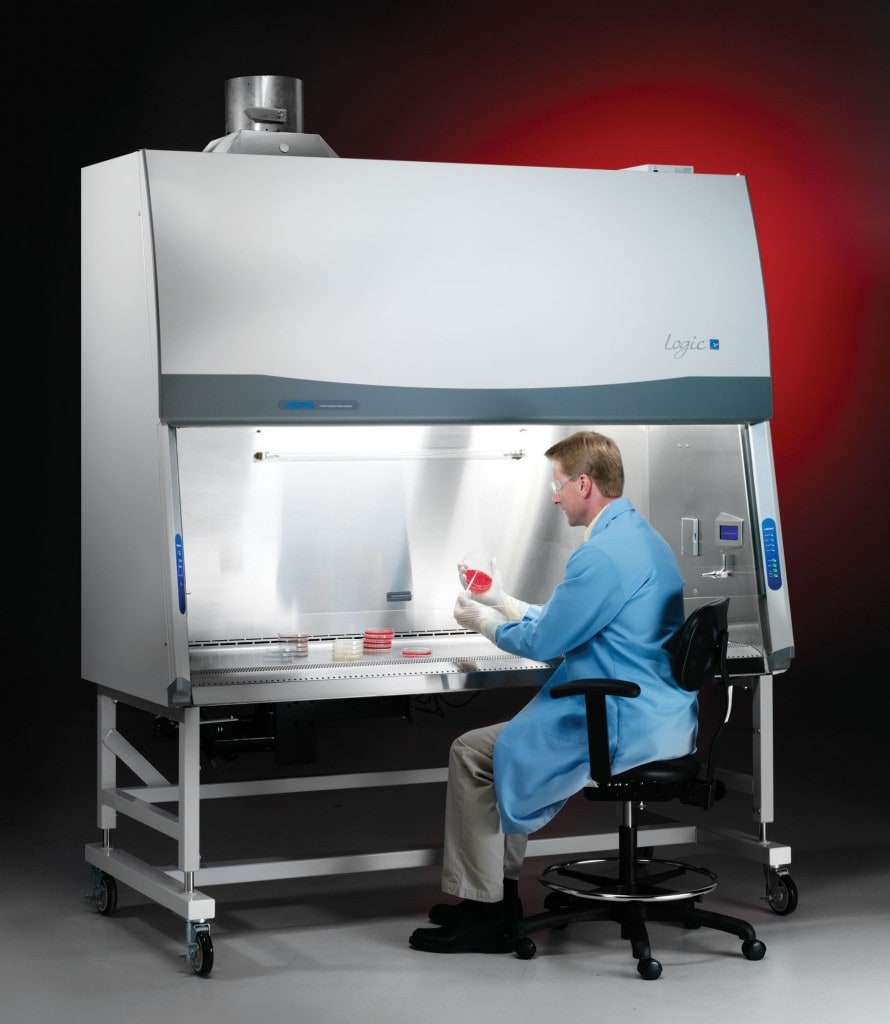Protecting Yourself 101: Who Monitors the Lab Processing?

The problem with regenerative medicine is that there is often nobody monitoring quality. Today I’ll go into an issue brought up by a viewer of our Facebook Live show “You’ve Got the Power” which asked me to review a clinic on the east coast. My first concern was who was monitoring the processing. So let’s dig into why that’s such a big deal.
You’ve Got the Power
Every Monday and Friday I host a show on Facebook with Jason Deitch, D.C. (Fridays from the Regenexx page and Mondays from the Centeno-Schultz page). We start with a topic and then answer questions about regenerative medicine. The goal is to educate patients so that they have the power to find the best solution for their problem.
The problem for patients is that medicine is often opaque. Meaning, that unlike buying the newest electronics gadget, there is no way for them to determine the quality of what it is they’re purchasing. In addition, in regenerative medicine, there are many moving parts to understand from an accurate diagnosis to how stem cells are harvested, to how they’re processed, to how they get reinjected. While it’s easy for an expert like myself to easily see the quality level of a given clinic, that’s often hidden from the purchasers of those services. Hence, our show is focused on the concept that knowledge is power.
A Question About a Specific Clinic
This past Friday (1/22/21), during our show, I got a question from a viewer about a clinic in the Carolinas. I had never heard of the clinic, so while on air I looked it up online. I quickly saw one huge glaring issue. The clinic was performing its own cell processing. I immediately brought up that in my experience as the Chief Medical Officer for Regenexx, that was an area of serious concern. Why? Let’s dive deeper here because understanding all of the moving parts involved of this topic is critical for patients to protect themselves.
A Serious Lack of Oversight
The small clinic labs that some practices have established process autologous cells for reinjection into patients. Hence, they are quite different than a diagnostic lab that processes and measures samples that get discarded. In addition, they are also substantially different than blood bank labs that process blood and other tissues for mass distribution, as in-office regen med labs work on one patient’s tissue at a time.
The only thing currently similar in medicine to an in-office regenerative medicine lab are those facilities that process fertility treatments like IVF. They also only process one patient’s autologous tissues. How are these regulated? They all have strict oversight and credentialing through the American College of Pathologists (CAP). Who credentials and monitors all of these regen med labs in small offices all across the country? The answer is nobody outside of Regenexx.
What Could Go Wrong?
Let’s explore some of the real issues that we at Regenexx monitor to show you how easy it is for a lab to look good on a website, but to have serious quality and safety issues for patients. You’ll quickly see why at Regenexx, we have two full-time employees in our lab safety department. Let’s go through these.
NSF-49

While this sounds obtuse, it’s pretty simple. Cells are often processed in what’s called a “Biologic Safety Cabinet” or BSC. That’s a hood where there is a laminar flow of air and a HEPA filter. The idea is that this space can be easily cleaned and sterilized and the air inside the cabinet is filtered. This is all done to protect the cells being processed from bacterial, viral, or fungal contamination.
The problem is that we have seen many labs using the wrong type of BSC. Instead of using the more expensive type designated for biologic sample handling, they use a smaller type designed for lab experiments. In fact, many of these physician offices bought a DVD a few years back that purported to show how to safely process your own PRP or bone marrow, but that made the mistake of featuring this type of less-safe and less expensive lab experiment hood.
Then we have “NSF-49”. This is a regulation that factors in the physics of how these BSCs work. Meaning, they can only be placed in certain parts of a room of a certain size to work efficiently to filter air and protect your cells. If they’re placed in too small a room or in the wrong spot relative to other things like an HVAC vent, then your sample is at risk.
How would you know if the clinic you want to visit uses the wrong type of hood or even knows about NSF-49? You wouldn’t. That’s why at Regenexx we enforce all of these BSC safety measures.
SOPs
It would seem like a simple thing that before you bake a cake or a new dish from scratch, you go online to look up the recipe. In fact, we all take for granted that a Starbucks in Dallas produces products that taste the same as one in Denver or Deluth. However, the problem with regen med is that unlike a cake, you have no way to “taste” the product and see if it’s made well or poorly. Its quality is invisible to you as it’s re-injected back into your body.
So what’s the recipe for cell processing? It’s called an SOP (Standard Operating Procedure). There are two easy things to see here. First, you have to have a good SOP or recipe and second, you have to make sure that everyone follows it to the letter at all times.
At Regenexx, we make sure that every site follows the same SOPs on cell processing. Our research staff also does the primary lab research to make sure these SOPs are optimized to produce the best cellular products. For example, how do you make a leukocyte poor platelet-rich plasma that is 14 times more concentrated than the patient’s baseline platelet count?
Next, we also provide surveillance for each lab to ensure that the processors can achieve the same results as the HQ site in Colorado. That requires the right initial hands-on training and both distance supervision over cameras in the hood and then periodic on-site visits.
Who is doing any of this in the lab we discussed on our last show? The answer is nobody. Meaning there is nobody to enforce these standards or to measure whether they are being achieved. There is no research lab to continually refine and improve the quality of the processing. Hence, you as the consumer have no way to tell if you’re getting the highest possible quality PRP or stem cells or something that won’t work nearly as well.
Contamination
Anything removed from your body like blood, bone marrow aspirate, or fat that needs to be processed and placed back into you is at risk for getting contaminated with bacteria, viruses, or fungus. Hence, constant contamination testing and monitoring is required for these labs. What’s involved?
At it’s most basic, these labs require intermittent bacterial and fungal contamination testing with actual tests of the lab surfaces. This is called RODAC testing. Here the processor cleans the BSC and then places a plastic dish with growth media against the surfaces. These plates are then grown in culture and then monitored for bacterial colonies. Given that even the best drug factories that require absolute sterility have lapses, the process is what’s critical here.
That process for bacteria found beyond the safe level requires that BSC be shut down, recleaned, and retested. In addition, all patients must be followed up with to ensure no actual clinical level contamination occurred. Meaning, it’s one thing to find a few bacteria where they shouldn’t be, but quite another to determine if that harmed anyone.
The next level down this rabbit hole introduces a concept called “biofilms”. That means that bacteria can hide under prior dried cleaning solution in a BSC. So the type of RODAC tests used is critical. Can those tests dissolve the biofilm to find the hidden bacteria?
In addition, there are spot checks used to instantly find bacterial DNA on surfaces. These should be used to more closely monitor labs that have had any positive tests. These can be performed every day or even several times a day.
At Regenexx, we have all of this dialed in. Again, we have employees dedicated at a national level to make sure that all labs are running safely. The other clinics outside of our network? There is no one to turn to who can do this for them. For example, while there are places that can read RODAC plates, there is no organization that can ride roughshod over the lab to make sure all of this gets done and decide what measures need to be instituted and when to make sure that things need to improve.
The Big Picture?
There’s MUCH more to this story than the three items I brought up here. However, as you can see, without national organizations to certify these in-house clinic labs, you as a consumer of regenerative medicine have no way to tell if all of these small things that can cause big problems are being closely monitored and acted upon. So when I said in our “You’ve Got the Power” show, “who is monitoring this lab?”, you now know what I meant.
The upshot? Knowledge is power. Anyone can throw up a really pretty website and claim to be processing your cells, but unlike the local Starbucks, nobody is monitoring the quality or safety of that processing. That’s quite different than Regenexx, where we delve deep into all of the little details that can make a big difference.

NOTE: This blog post provides general information to help the reader better understand regenerative medicine, musculoskeletal health, and related subjects. All content provided in this blog, website, or any linked materials, including text, graphics, images, patient profiles, outcomes, and information, are not intended and should not be considered or used as a substitute for medical advice, diagnosis, or treatment. Please always consult with a professional and certified healthcare provider to discuss if a treatment is right for you.
